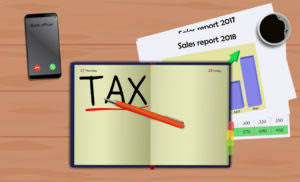Certified Payroll: What It Is & How to Report It
If you’ve been hired as a contractor to work on a government project, you’ll need to adhere to some additional payroll requirements. Certified payroll comes from the Davis-Bacon Act, which was passed by Congress in 1931 to protect workers from low hourly wages. Per the Davis-Bacon Act, if the government gives your business a contract for over $2,000 to complete construction, alteration or repair of public buildings or public when is certified payroll required works projects, you must comply with certified payroll. Under the Davis-Bacon Act and related acts, contractors are required to pay, at minimum, the prevailing wage. You can think of prevailing wage as the combination of the basic hourly rate of a worker on a federally funded project, plus any fringe benefits. The contractor—or subcontractor—is responsible for paying all on-site hours, including said fringe benefits.
Pursuit of IRA credits intensifies prevailing wage focus – Grant Thornton
Pursuit of IRA credits intensifies prevailing wage focus.
Posted: Wed, 18 Oct 2023 07:00:00 GMT [source]
On the other hand, certified payroll is a particular payroll process and report (form WH-347) that contractors and subcontractors hired for publicly funded projects are required to submit. It requires additional steps than normal payroll, such as documentation and validation. There is also a statement of compliance that states your attached payroll report is accurate and complete. The goal of WH-347 is to ensure you’re paying your employees the prevailing wage or the average wage for employees in a specific occupation. It shows that your business is complying with all prevailing wage requirements.
What Happens if You Fail To Comply With Certified Payroll?
In doing so, they understand that the willful falsification of any payroll information may subject the contractor or subcontractor to civil or criminal prosecution. Today, these laws apply to the construction, alteration, or repair (including painting and decorating) of public buildings or public works projects. The term “public works” refers to structures built for public use, including schools and highways. According to the Fair Labor Standards Act (FLSA), you must keep payroll records for at least three years. These include personal employee information, hours worked, pay rate, regular and overtime hours worked, additions to and deductions from pay, total wages per pay period and the dates of payment. Ideally, you’d store your records digitally so they never get lost.
- Follow the instructions to create a certified payroll report in QuickBooks.
- Keep in mind that if you make mistakes on your certified payroll, you cannot make changes.
- Don’t fret if you feel in over your head—we’ll break down how to report certified payroll, so you can complete this essential process and make sure you’re in compliance when working on government projects.
- One big one to be aware of is that certified payroll does not apply to salaried workers in executive, administrative, or professional positions.
- A well-written manual can mean the difference between processing your payroll efficiently without errors and facing penalties for noncompliance.
Tracking work classifications is an important part of correct accounting. Your employees’ prevailing wage rate will change depending on what work they perform at a certain point in time. Classification mistakes can result in errors in the payroll reporting process that are difficult to correct. To avoid common mistakes when filing certified payroll, businesses should pay attention to timely and accurate record-keeping and comply with the specific reporting guidelines.
When is Certified Payroll Required?
While the term “construction” is broad, it can apply to a variety of activities such as painting, decorating, cleaning, plumbing, drywall and electrical. Prevailing wage laws were created to ensure fair pay to hourly workers. To meet these laws, your employees’ gross wages must adhere to the prevailing wage requirements for work on related projects in surrounding areas.
“S.2302, or America’s Transportation Infrastructure Act of 2019 is the largest amount of funding provided for highway reauthorization legislation in history. The bill authorizes $287 billion from the Highway Trust Fund over five years in investments to maintain and repair America’s roads and bridges and to keep our economy moving. This is the letter where you certify that you and your business are in compliance with the terms of your federal contract. The “contractor, subcontractor or authorized person responsible for supervising the payment of wages” must sign the statement. Hourly’s full-service payroll platform can automatically track, record and pay wages for you—so you don’t have to do it manually. Try payroll software to automate time-consuming portions of Davis-Bacon Act compliance.
Can Only Certified Payroll Professionals Do Certified Payroll?
For state projects, the timeframes vary but you’ll typically need to keep the records for around 2-4 years. Carpenters, electricians, plumbers, ironworkers, flaggers, craftsmen, welders, concrete finishers, longshoremen, power equipment operators, and helpers are all job classifications that fall under prevailing wage law. You can contact the Department of Labor to find your wage determination. The Fair Labor Standards Act (FLSA) requires that you keep payroll records for at least three years. A Certified Payroll Statement of Compliance is a signed statement (found on page two of the WH-347 form) that confirms covered workers were paid in accordance with the Davis-Bacon Act.
Gusto’s intuitive payroll system and reporting features can help contractors stay compliant and minimize errors by automating calculations and generating accurate reports. In this guide, we’ll give you an in-depth understanding of certified payroll reports and answer common questions to equip you with the confidence to follow certified payroll reporting requirements. Certified payroll is a subcategory of a contractor’s payroll responsibilities. Certified payroll must https://www.bookstime.com/articles/accounting-florida be filed by companies, typically contractors, who are working on government-contracted projects. While it might sound like your general payroll process, it’s actually a bit more complicated as there are specific wages that need to be paid and a weekly form submittal process you need to adhere to. The Department of Labor will review certified payroll reports to ensure wages are paid fairly, for which the government agency has increased its scrutiny in recent years.
Certified payroll pointers for 2020
Contractors with the lowest bid prices for public works projects often have an advantage. Since bid prices account for the rate of pay of employees, some contractors would underpay employees to gain the lowest bid advantage. Fringe benefits can be perks such as healthcare, paid time off, and other traditional workplace benefits, or they can be paid in cash. When paying cash fringe benefits, this additional hourly pay is a percentage of the prevailing wage.
If your business works on a federal contract over $2,000, the Davis-Bacon Act says you need to comply with certified payroll requirements. Businesses working on a federally funded project need to sign up for a SAM.gov account. From there, they can search for the prevailing wage rates based on the wage determination (WD) number, public building or works or service contract act. Your payroll data will change every time you add employees, lose employees or give pay raises. By taking the time to create a procedure manual that documents your certified payroll process, you can easily train new team members. A well-written manual can mean the difference between processing your payroll efficiently without errors and facing penalties for noncompliance.








